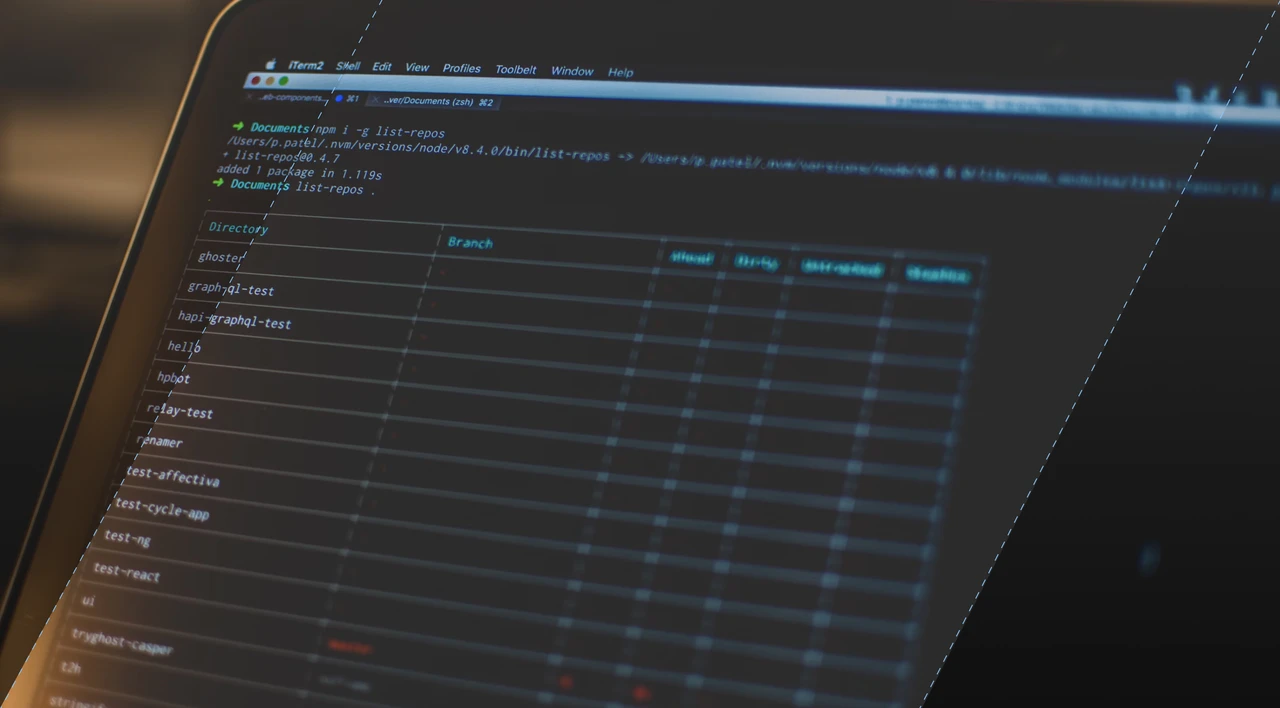SHARE
Convert String to Date JavaScript

Contents
Contents
JavaScript is an integral part of many successful websites, with 6,987,293 detections of JavaScript Libraries and Functions in the Top 1 Million sites globally.
Its wide array of functionalities allows it to adapt to various needs, including handling timestamps. One common task is converting a string representation of a date into a usable date object. This can be accomplished using JavaScript’s Date.parse() method.
The Date.parse() method takes a date-time string as a parameter and returns the date’s timestamp as a number. This allows you to convert a date string into a format that JavaScript can understand and manipulate. However, the format of the date-time string is crucial, as some formats may not work consistently across all browsers.
For handling different date formats and ensuring consistent results, libraries like Moment.js can be very useful. However, JavaScript alone can handle date conversions effectively. Let’s delve deeper into the Date.parse() method and explore how it works.
Key Takeaways:
- The Date.parse() method in JavaScript converts a date string into a date object’s timestamp.
- Using a library like Moment.js can provide more flexibility and handle various date formats.
- For consistent results, it is recommended to assume the code uses the UTC timezone.
- Understanding the different methods and techniques available in JavaScript can help you handle dates like a pro.
The Date.parse() Method in JavaScript
In web development, the Date.parse() method in JavaScript is a powerful tool for converting a string representation of a date into a date object. This method allows you to parse a date and retrieve its timestamp as a number.
To use the Date.parse() method, you simply pass a string in the date time string format as a parameter. The format can be a valid ISO 8601 format or any other format supported by the JavaScript implementation you are using.
If the provided date string cannot be parsed as a valid date, the method will return NaN (Not a Number). This can happen if the string is not in the correct format or if the date itself is invalid (such as February 30th).
It’s important to note that the Date.parse() method is a static method of the Date object, which means it is always used as Date.parse().
Let’s take a look at an example:
In this example, we have a date string in the ISO 8601 format. We pass this string to the Date.parse() method, which returns the corresponding timestamp representing the date and time.
It’s worth mentioning that the Date.parse() method is not the only way to convert a string to a date object in JavaScript. There is also the option of using the Date() constructor or external libraries like Moment.js, which offer additional functionalities and formatting options.
You can make use of Moment’s bundled locale data to significantly reduce the final bundle size by over 1 MB minified. The choice of method depends on the specific requirements of your project.
Using the Date() Constructor in JavaScript
Across JavaScript’s many frameworks, you have the flexibility to create a date object by using the Date() constructor. This constructor allows you to specify various parameters to define the desired date and time components.
To create a date object with a specific year, month, and day, simply use the following syntax:
It is important to note that the month parameter is zero-based, meaning January is represented by 0 and December by 11. Therefore, when specifying the month, be sure to use the appropriate value to ensure accuracy.
If you need to include the time along with the date, you can add the hours, minutes, and seconds parameters as well. This allows you to create a date object that includes both the date and the precise time.
Another useful feature of the Date() constructor is the ability to use a date string in a specific format to create a date object. This is particularly handy when dealing with date strings that are in a non-standard format and are not supported by the Date.parse() method.
Example: Creating a Date Object Using the Date() Constructor
Let’s take a look at an example to illustrate how to use the Date() constructor:
|
Date |
Code |
Result |
|
Date with year, month, and day |
new Date(2022, 0, 1) |
January 1, 2022 |
|
Date with year, month, day, hours, minutes, and seconds |
new Date(2022, 0, 1, 12, 0, 0) |
January 1, 2022 12:00:00 PM |
|
Date from a specific date string |
new Date(“2022-01-01T12:00:00”) |
January 1, 2022 12:00:00 PM |
In the first example, we create a date object that represents January 1, 2022. Since the month parameter is zero-based, we use 0 to represent January. The resulting date object will only include the date component.
In the second example, we create a date object that includes both the date and time components. The year, month, day, hours, minutes, and seconds parameters are specified accordingly to represent January 1, 2022, at 12:00:00 PM.
The third example demonstrates how the Date() constructor can accept a specific date string as input. The string “2022-01-01T12:00:00” represents January 1, 2022, at 12:00:00 PM. By passing this string to the constructor, a date object is created with the specified date and time.
As you can see, the Date() constructor provides flexibility in creating date objects in JavaScript. Whether you need to specify the date and time components individually or use a specific date string, the constructor allows you to create date objects that suit your needs using international standard date and time notation.
Using Moment.js for Date Conversion
Moment.js is a widely used JavaScript library currently used by 7,055,425 live websites for handling dates and times in JavaScript. It provides developers with a powerful and easy-to-use API for parsing, manipulating, and formatting dates. Whether you need to convert a string to a date object or perform complex date manipulations, Moment.js has got you covered.
One of the key features of Moment.js is its ability to parse date strings and convert them into date objects. With Moment.js, you can effortlessly convert a string to a date object using its parsing functions. These functions support a wide range of date formats, making it a versatile tool for handling dates in various formats.
Moment.js also excels at handling time zones. It provides developers with built-in support for working with dates in different time zones, ensuring accurate and reliable date conversions. It takes into account daylight saving time and other time zone complexities, saving you from headaches related to time zone conversions.
To demonstrate the power and flexibility of Moment.js, let’s take a look at an example:
|
Input Date String |
Output Date Object |
|
“2022-12-25” |
Sun Dec 25 2022 00:00:00 GMT-0500 (Eastern Standard Time) |
|
“March 8, 2022 13:45:00” |
Tue Mar 08 2022 13:45:00 GMT-0500 (Eastern Standard Time) |
|
“2022-02-28T17:30:00Z” |
Tue Feb 28 2022 12:30:00 GMT-0500 (Eastern Standard Time) |
As you can see from the example, Moment.js effortlessly converts various date strings into the corresponding date objects while considering the time zone offset. This makes it a valuable tool for applications that deal with date and time data from different sources.
In addition to parsing and manipulating dates, Moment.js also offers a range of formatting options. You can easily format date objects according to your desired output format, whether it’s displaying the date in a specific locale, customizing the date format, or even presenting relative time like “2 hours ago” or “in 5 minutes.”
Overall, Moment.js is a versatile and comprehensive library for working with dates and times in JavaScript. It simplifies the process of converting strings to date objects and provides powerful tools for manipulating and formatting dates.
Whether you’re working with complex date-related tasks or simply need to parse a date string, Moment.js is a reliable choice that will save you time and effort which is why it is downloaded 12 million times per week.
Conclusion
Converting a string to a date object in JavaScript can be achieved in multiple ways. The Date.parse() method is useful when dealing with date strings in a specific format. It takes a string as input and returns the date’s timestamp. On the other hand, the Date() constructor offers more flexibility in handling different date formats, allowing you to specify the date and time components or parse a specific date string.
Additionally, utilizing a library like Moment.js can simplify the date conversion process, providing support for various formats and time zones.
By understanding these different methods and techniques, you can confidently handle date conversions in your web projects. Whether you prefer the simplicity of Date.parse(), the flexibility of the Date() constructor, or the comprehensive features of Moment.js, JavaScript equips you with the tools necessary to convert strings to date objects effortlessly.
Mastering date conversions will empower you to create dynamic and accurate date functionalities in your applications.
If you need expert assistance in Javascript development and implementing robust date functionalities, consider partnering with Flatiron’s Node.js development services. Our experienced team can help you build efficient and scalable applications tailored to your needs. Contact us today to learn more!
Frequently Asked Questions
How can I convert a string to a date in JavaScript?
You can convert a string to a date in JavaScript by using the Date() constructor or the Date.parse() method. The Date() constructor allows you to create a date object with specific date and time components, while the Date.parse() method parses a string representation of a date and returns its timestamp.
What is the Date.parse() method in JavaScript used for?
The Date.parse() method in JavaScript is used to parse a string representation of a date and return its timestamp as a number. It takes a string in the date time string format as a parameter and supports the ISO 8601 format and other formats supported by the implementation.
How can I create a date object using the Date() constructor in JavaScript?
To create a date object using the Date() constructor in JavaScript, you can specify the year, month, day, hours, minutes, and seconds as parameters. For example, you can use the syntax new Date(year, month, day, hours, minutes, seconds) to create a date object with specific date and time components. The month parameter is zero-based, so January is 0 and December is 11.
What is Moment.js and how can I use it for date conversion in JavaScript?
Moment.js is a popular JavaScript library that provides an intuitive API for parsing, manipulating, and formatting dates in JavaScript. You can use Moment.js for converting a string to a date object by using its parsing functions. It supports a wide range of date formats and can handle different time zones, making it useful for complex date manipulations.
Custom Software Development Services
Flatirons Development offers custom development services tailored for your unique business needs.
Get the CEO's Take
Handpicked tech insights and trends from our CEO.
Custom Software Development Services
Flatirons Development offers custom development services tailored for your unique business needs.
Get the CEO's Take
Handpicked tech insights and trends from our CEO.

Secure Mobile App Development: Prioritizing Data Protection
Flatirons Development
Oct 22, 2025
What is Data Ingestion? Definition, Types, and Best Practices for Efficient Data Processing
Flatirons Development
Oct 16, 2025
Enterprise Computing: Transforming Business Operations
Flatirons Development
Oct 09, 2025
Explore the Top Embedded Systems Examples of Today
Flatirons Development
Oct 04, 2025
Best Manual Testing Tools to Boost Your Software Quality
Flatirons Development
Sep 28, 2025
Digital Product Development: Enhance Your Business Offerings
Flatirons Development
Sep 12, 2025
Secure Mobile App Development: Prioritizing Data Protection
Flatirons Development
Oct 22, 2025
What is Data Ingestion? Definition, Types, and Best Practices for Efficient Data Processing
Flatirons Development
Oct 16, 2025
Enterprise Computing: Transforming Business Operations
Flatirons Development
Oct 09, 2025
Secure Mobile App Development: Prioritizing Data Protection
Flatirons Development
Oct 22, 2025
What is Data Ingestion? Definition, Types, and Best Practices for Efficient Data Processing
Flatirons Development
Oct 16, 2025
Enterprise Computing: Transforming Business Operations
Flatirons Development
Oct 09, 2025
Secure Mobile App Development: Prioritizing Data Protection
Flatirons Development
Oct 22, 2025
What is Data Ingestion? Definition, Types, and Best Practices for Efficient Data Processing
Flatirons Development
Oct 16, 2025
Enterprise Computing: Transforming Business Operations
Flatirons Development
Oct 09, 2025